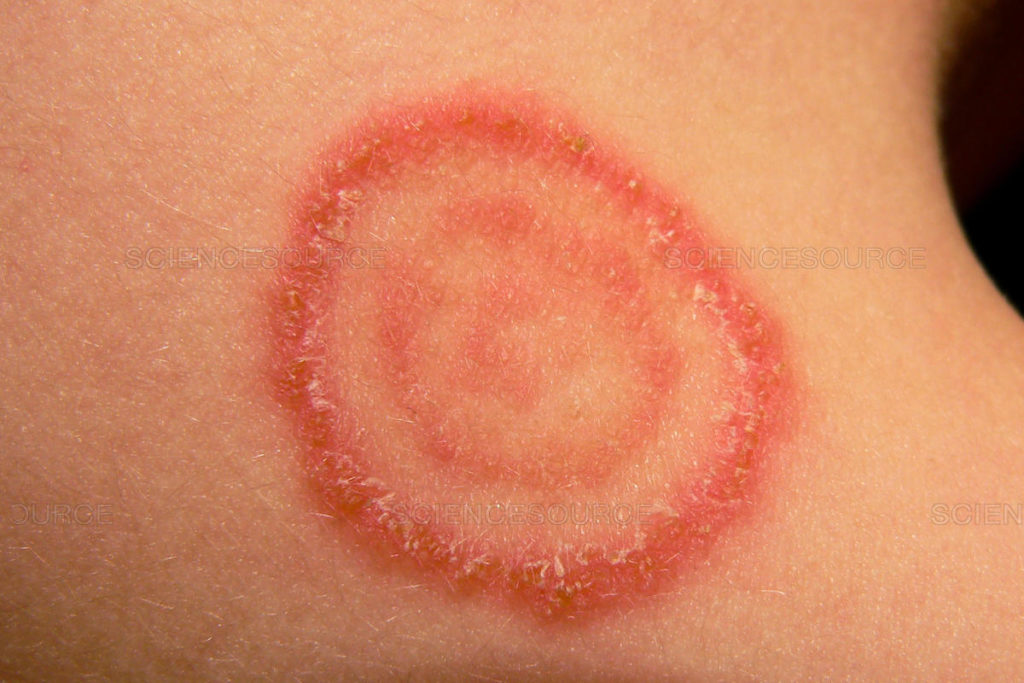DERMATOPHYTOSIS

Definition: Dermatophytosis a superficial fungal infection of the skin, hair, and nails caused by dermatophytes (parasitic fungi).
Other names: Tinea, Ringworm. Dermatophytosis in different parts of the body have different names:
- Tinea pedis (athlete’s foot) affects the feet (The most common Tinea in the USA)
- Tinea unguium affects the fingernails and toenails
- Tinea corporis affects the arms, legs, and trunk with ringworm
- Tinea cruris (jock itch) affects the groin area
- Tinea manuum affects the hands and palm area
- Tinea capitis affects the scalp
- Tinea barbae affects facial hair
- Tinea faciei (face fungus) affects the face[1]
Causes
Epidermophyton, Microsporum, and Trichophyton genera of dermatophyes are the most common causes of dermatophytosis. Humid or moist skin provides a very favorable environment for the establishment of fungal infection.
Symptoms
Itching is the most common symptom. The clinical appearance of the fungal infection varies depending on the type of dermatophye and the location of the invasion. Scaling (flaky skin), pustules (elevation of the skin containing pus) and erythema (redness) may be present. Patients with tinea capitis often have hair loss. [2]
Treatment
Tinea infections may be treated with topical agents (ie, creams, lotions, solutions, powders, sprays) often containing antifungals or steroids as the drug of choice or with oral antifungals in extensive or recalcitrant disease. Use of oral medications requires laboratory blood work and a typical course is 3 months.[3],[4]
References
- Elewski BE. The dermatophytoses. Semin Cutan Med Surg. 1996;2:1043-55.
- Rashid M Rashid, MD, PhD, Post-Graduate Year 2 and House Staff Resident, Department of Dermatology, MD Anderson Cancer Center, University of Texas and The Morzak Center. http://emedicine.medscape.com/article/787217-overview
- Gupta AK, Sauder DN, Shear NH. Antifungal agents: an overview. Part I. J Am Acad Dermatol. May 1994;30(5 Pt 1):677-98


